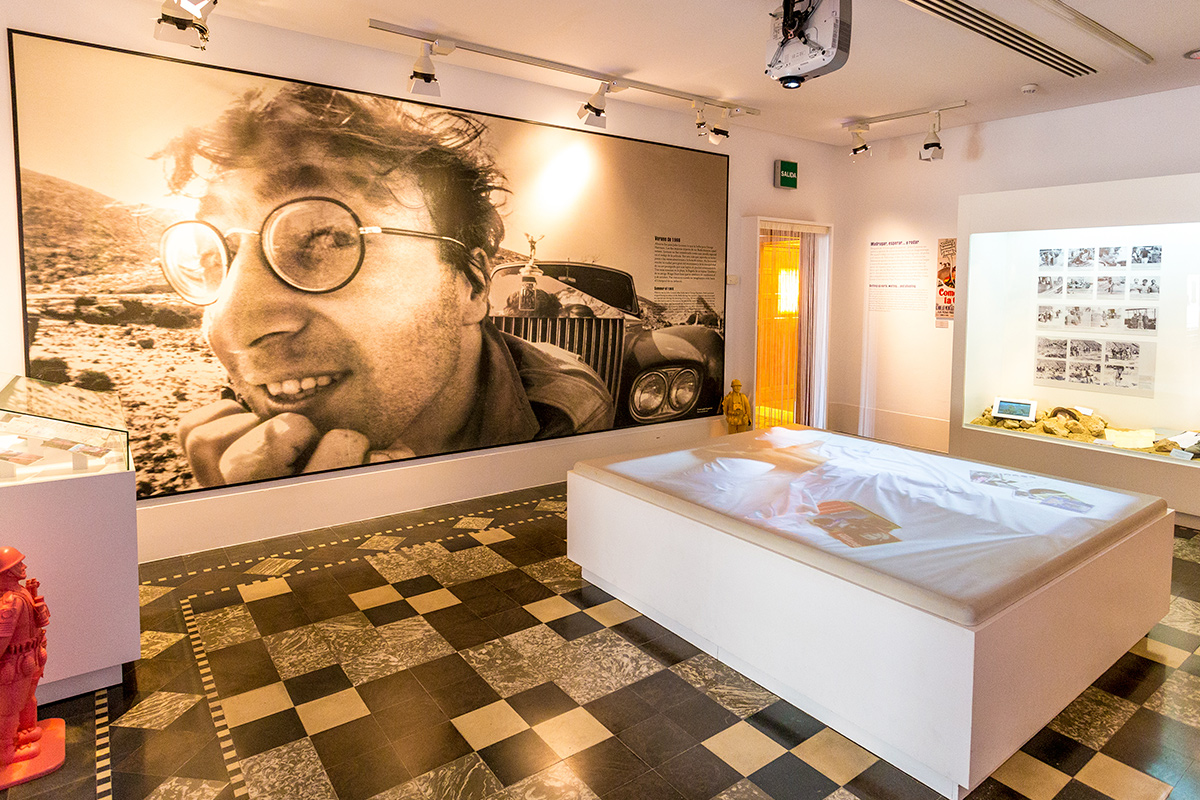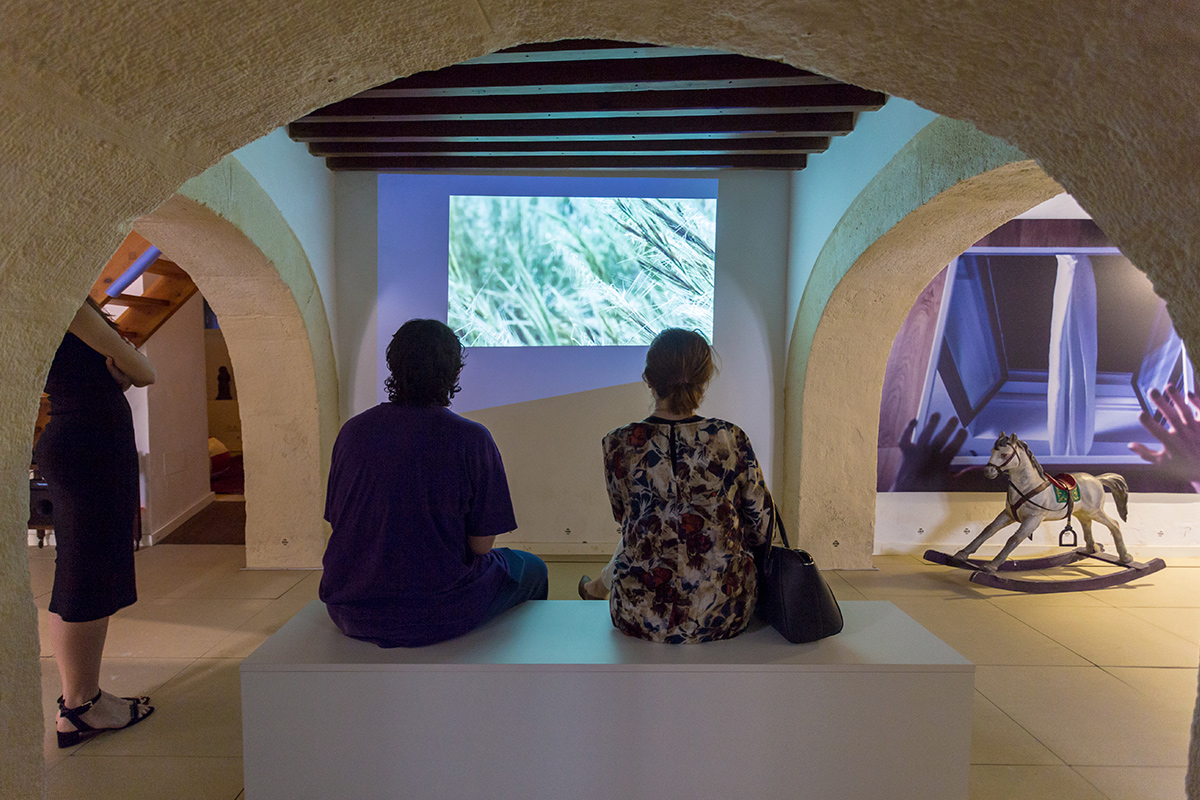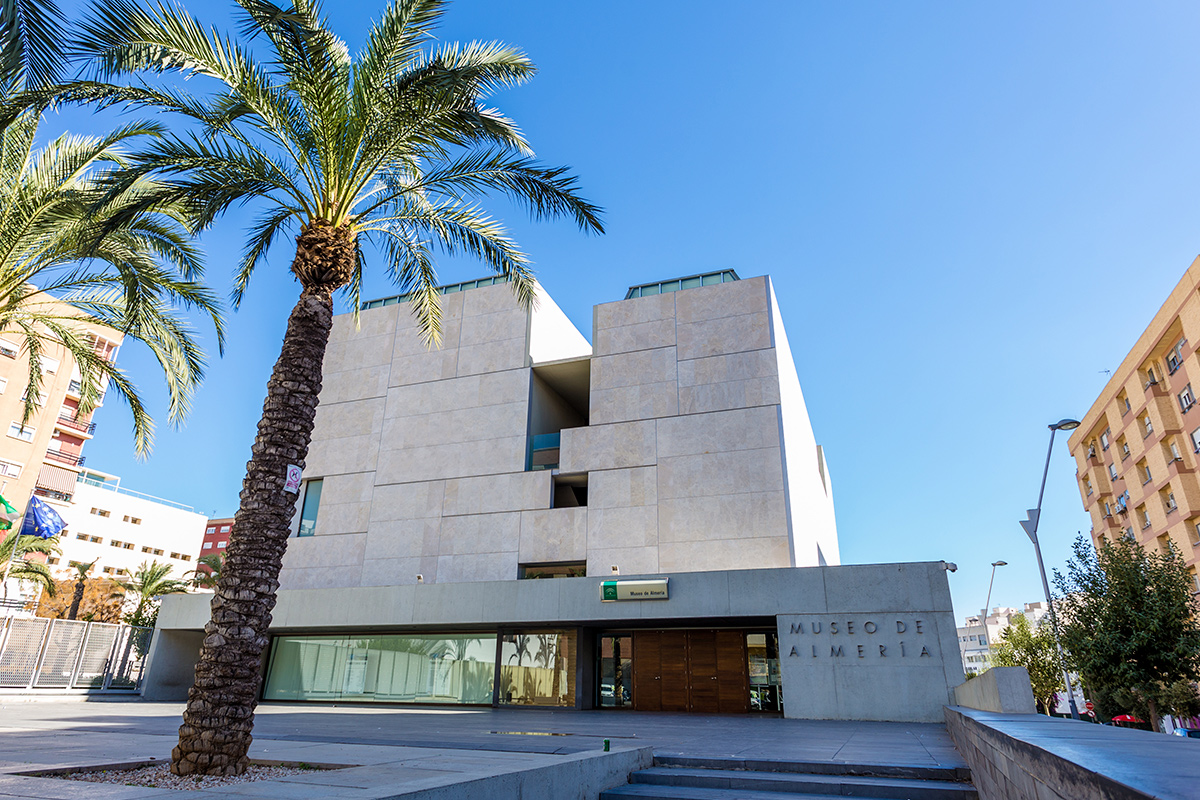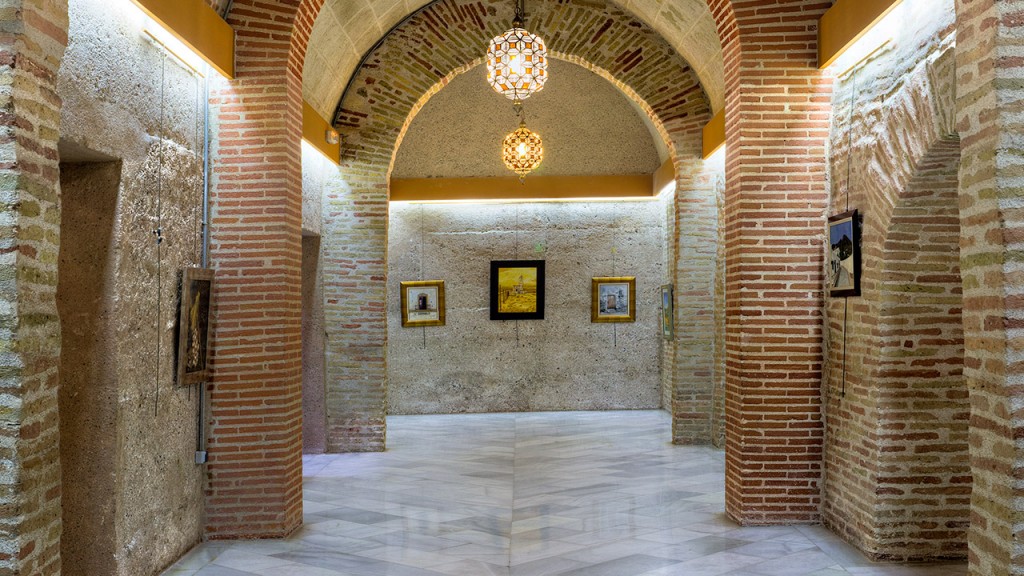The House of Cinema
It is an old farmhouse where home-elesplendor the world of celluloid recalled in Almería. Dated in 1866 built on the outskirts of the city, remodeled and enlarged in the twentieth century, and its first inhabitants the Balmas family and descendants.
In the House of Cinema, which has been restored respecting its original structure, it is made special mention of the unforgettable artist who lived a short but intense period in the house: the leading member of The Beatles, John Lennon, who rolled in Almeria in 1966 the film How I won the war, inspired by these walls for one of his most famous compositions: Strawberry Fields Forever.
The restoration of the building is the architect Ramón de Torres, being the same cut of Gongora or Fischer cottages: Luxury gazebo, large garden with pool, tower-dovecote … have been recovered from the gardens of romantic, with arches and climbing roses, araucarias and palms, as a place to enjoy water, smells and colors.
Room 1. The visitors will find the entrance hall of the mansion, stay regain the splendor of their best days, decoration floor, the wainscoting on the walls, a stately air to talk about the original intention that he decorated this room, a space where we met the patriarch of the house that we will receive before a majestic fireplace, one of the emblems of the house, also known as tower House, House Balmas, Cortijo Romero or farm Santa Isabel.
Room 2.Enters the exhibition and musealized space and visitor impact to a hologram which presents each of the characters who have gone through the house. In a treatralizado ambient sound, props, key figures in the history of the house will be combined with an emphasis on its architecture, its tenants and the socio-historical context of the time.
ROOM 3. (35mm.) Exhibition area dedicated to raising awareness of the cinematic past of the province. It is divided into 4 separate areas:
- Paneled area where the operation of a film is presented through its most important components: extras script, interpreters, specialists, directors of theaters … There is a scenic theming with audiovisual devices and characterized characters.
- 3D room. a 3D movie where they had celebrated runnings place, locations, both in the city and in the province is projected.
- It rolls. Upon entering the room the filming of a movie will be perceived, the visitor will be starring in several famous scenes with great characters in the history of cinema.
- Chroma scenarios. Gallery scenarios of the most important films shot in Almería. See reflected in a real scenario with its protagonists significativos.Se wheel. Upon entering the room the filming of a movie will be perceived, the visitor will be starring in several famous scenes with great characters in the history of cinema.
Room 4.(Years 60 and 70) In this area a panoramic view of the characters who lived in the house, which was a source of inspiration or passed any season is observed. In the main hall which has a beautiful view, they will each movie characters who are celebrating a unique and anachronistic party: we will see characters from different movies and characters and varied artists, including David Lean, Yul Brynner and John Lennon. The lounge is a magical place. Enjoy it and then turn around and watch from the balcony the beautiful gardens of the house.
A trip back in time where it emphasizes his bed (fully functional and modern style Lennon) and his bathroom where the ex-Beatle created the composition “Strawberry Fields Forever”. In the living people, objects and places that had some meaning for the composer at the time, and especially its relation to recreate Almería.
House of the poet Jose Angel Valente
Jose Angel Valente was a poet, novelist, essayist and one of the most renowned Spanish intellectuals during the first half of the twentieth century. He lived in big cities like Madrid, Paris, Oxford or Geneva, but I just choosing Almería as a residence for the last fifteen years. He felt what he called “the irrevocable call light.”
This space-the place of poet thereafter set a presence on the legacy of his work which is manifested in the influence of a southern city and its light in his poetry. Here is Valente this house or, in his words, the house finds him: “It is not known exactly who chose who, if I chose the house or the house came to me.” From the first moment he actively participated in the city life, becoming involved in many projects of cultural, artistic and social character; but also it expanded this activity to other areas of Almeria geography, as evidenced by his defense of Natural Park Cabo de Gata-of whose Board was integrante- or collaboration with photographers like Jeanne Chevalier or Manuel Falces.
La Casa del Poeta, through its various spaces and thematic areas, is a journey through the life and poetry of Jose Angel Valente, stopping at the most important aspects that shaped the one and the other, in an attempt to accessible and highlight the importance of his figure in the panorama of contemporary Spanish letters, and to establish the mutual influence exerted on Valente-and vice versa Almeria and larelación the poet with the other arts. A confluence of what was always an intense defender.
Museum of Almería (Formerly the Archaeological Museum)
The Museum, a recently reconstructed modern building, located on the Carretera de Ronda, houses interesting collections with valuable works from prehistoric times to the Muslim period.
In addition, this museum was awarded the European Museum of the year in 2008, and inside, in addition to the continuous exhibition, other activities such as conferences, traveling exhibitions and festivals are held.
ACCESSIBLE BUILDING FOR PEOPLE WITH REDUCED MOBILITY
Arabic Wells (water wells)
Almería, in the Muslim period, did not have a water supply network to buildings, making it necessary to raise pillars and fountains. Water supply to Almeria we hear mainly thanks to al-Himyari and al-Udri. According to al-Himyari, Jairán during his reign (1012-1028) was the one who built the water line, and according to al-Udri was during the reign of his successor Zuhayr (1028-1038). In any case, they are traditionally known as Cisterns of Jairán.
What is certain is that a water pipe was built from source area Alhadra to the highest part of the city, Puerta de Pechina (actualPuerta Purchena), building up rain tanks for public use in the eleventh century belonging to Taifa era.
Of these wells, which are currently in Tenor Iribarne street, only three interconnected buildings of 15 x 3.5 m of surface, built of solid bricks and barrel vaults are preserved.
The volume of stored water was 630,000 liters, enough to supply the city in a long siege, since it had also the existence of wells to wells and irrigation ditches amount.









